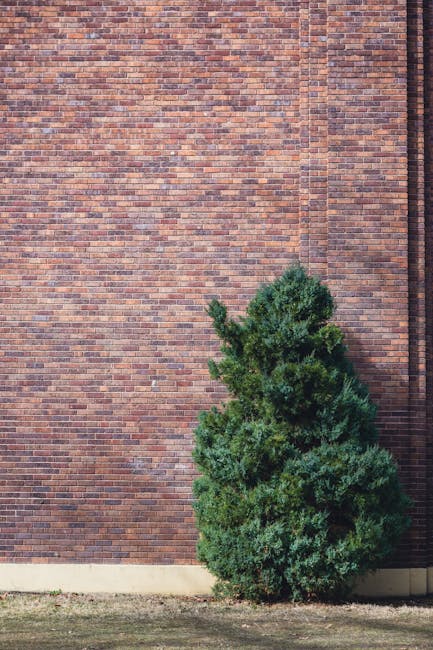Design Principles for Harmonizing Hardscape and Softscape in Outdoor Spaces
Introduction
Creating captivating outdoor spaces involves a delicate balance between hardscape and softscape elements. Hardscape, encompassing non-living features like patios, walkways, and retaining walls, provides structure and functionality. Softscape, on the other hand, includes living elements such as plants, trees, and lawns, adding life and vibrancy. Harmonizing these two aspects is crucial for designing outdoor areas that are both aesthetically pleasing and environmentally sound. This article explores key design principles to achieve that perfect balance.
Design Principles for Harmonious Hardscape and Softscape
1. Understanding the Site and its Context
Before diving into design specifics, thorough site analysis is essential.
- Climate Analysis: Understanding sunlight exposure, rainfall patterns, and wind direction will inform plant selection and hardscape material choices.
- Soil Analysis: Testing the soil’s pH level and drainage capabilities will determine which plants will thrive.
- Existing Features: Consider the architectural style of your home and any existing landscaping. Integrate new designs seamlessly with what’s already present.
- Local Regulations: Be aware of any zoning regulations or HOA restrictions that may impact your design choices.
2. Establishing a Clear Design Style and Theme
A consistent design style ensures cohesion between hardscape and softscape.
- Formal Gardens: Characterized by symmetry, geometric shapes, and manicured plants. Hardscape often includes straight paths, precisely cut hedges, and classical fountains.
- Informal Gardens: Embrace natural, flowing lines and a more relaxed feel. Softscape features native plants and meandering pathways. Hardscape blends seamlessly with the environment.
- Modern Gardens: Emphasize clean lines, minimalist aesthetics, and contemporary materials like concrete and steel. Softscape may include ornamental grasses and drought-tolerant plants.
- Cottage Gardens: Overflowing with colorful flowers, herbs, and vegetables. Hardscape elements such as stone paths and rustic fences add charm.
3. Scale and Proportion
Maintaining appropriate scale and proportion between hardscape and softscape is vital.
- Height: Ensure that the height of hardscape features (e.g., walls, pergolas) complements the height of surrounding trees and shrubs.
- Area: The size of patios and walkways should be proportionate to the overall size of the yard and the intended use of the space.
- Texture: Use a variety of textures in both hardscape and softscape to create visual interest. Balance rough textures (e.g., natural stone) with smooth textures (e.g., polished concrete).
4. Color and Texture
Color and texture play a significant role in creating visual harmony.
- Color Palette: Choose a color palette that complements the architecture of your home and creates the desired mood. Consider the color of your house when selecting hardscape materials like pavers, stone, and wood.
- Plant Selection: Select plants with varying leaf shapes, textures, and bloom colors to create visual interest. Consider the seasonal changes and how the colors will evolve throughout the year.
- Contrast: Use contrasting colors and textures to highlight certain features or create focal points. For example, place a dark-colored mulch around bright-colored flowers.
5. Functionality and Flow
Design with functionality and flow in mind to create a user-friendly outdoor space.
- Traffic Flow: Plan walkways and paths that provide easy access to different areas of the yard.
- Outdoor Living Spaces: Create designated areas for dining, lounging, and entertaining.
- Accessibility: Ensure that the design is accessible to people of all abilities.
- Sustainability: Incorporate sustainable practices such as using permeable pavers to reduce runoff and planting native species to conserve water.
6. Material Selection
Choosing the right materials for both hardscape and softscape is critical for durability, aesthetics, and environmental impact.
- Hardscape Materials: Options include natural stone, brick, concrete pavers, wood, and gravel. Consider durability, maintenance requirements, and aesthetic appeal.
- Softscape Materials: Choose plants that are well-suited to your climate and soil conditions. Consider using native plants, which require less water and maintenance. Choose organic mulches to improve soil health.
- Sustainable Options: Consider using recycled or reclaimed materials for hardscape features. Choose drought-tolerant plants and water-efficient irrigation systems.
Conclusion
Harmonizing hardscape and softscape elements is a journey of thoughtful planning and creative execution. By understanding site conditions, establishing a cohesive design style, and paying attention to scale, color, functionality, and material selection, you can create outdoor spaces that are not only beautiful but also functional, sustainable, and reflective of your personal style. Investing time and effort in these design principles will result in a harmonious and inviting outdoor environment that enhances your overall living experience and boosts your home’s curb appeal.














Post Comment